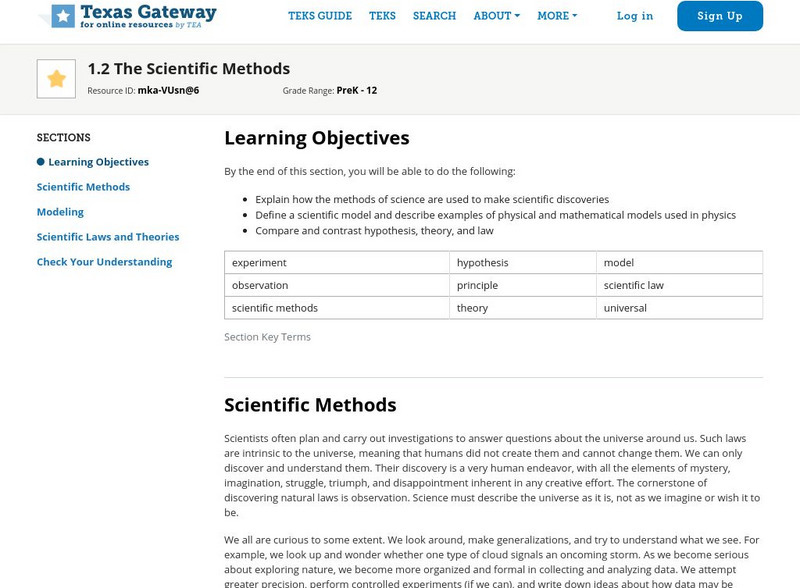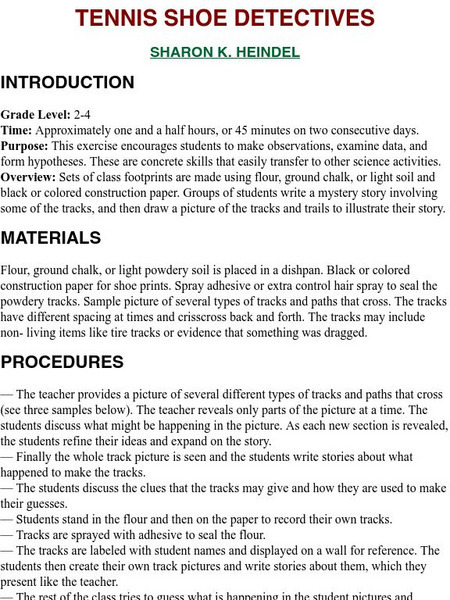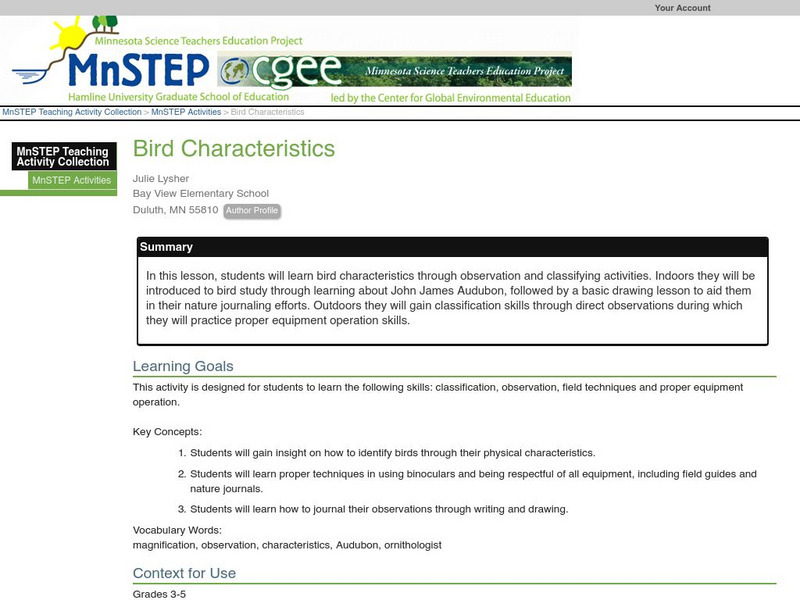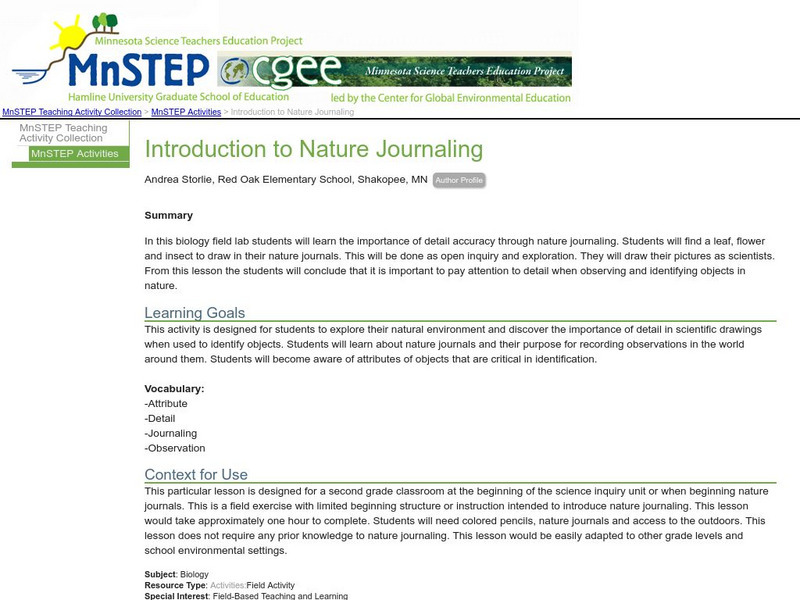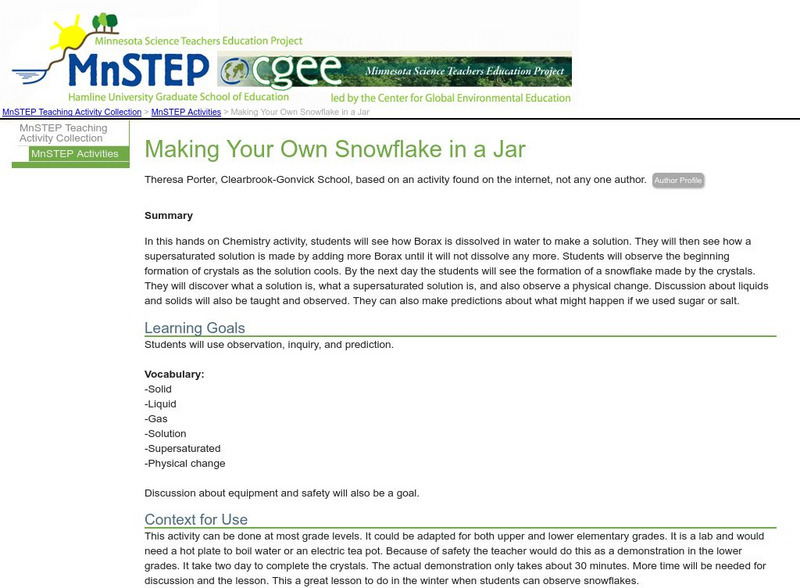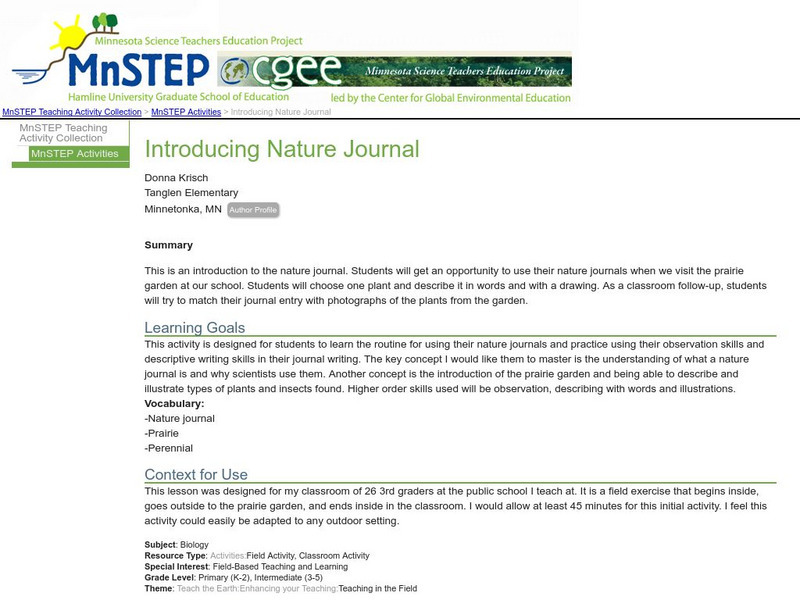Better Lesson
Better Lesson: Our Sky
What objects are in the day sky and the night sky? How do they seem to move? Come and explore with us as we discover the sun, moon, planets and stars! This detailed lesson plan includes pictures and videos of the lesson in action,...
Texas Education Agency
Texas Gateway: Physics: The Scientific Methods
By the end of this section, you will be able to explain how the methods of science are used to make scientific discoveries; define a scientific model and describe examples of physical and mathematical models used in physics; and compare...
University of California
South Coast Science Project: Mimicking Plants and Animals Lesson Plan
In this instructional activity, students are challenged to think about external features that animals and plants have that humans have copied. Students then apply their engineering skills to design a jacket. In addition, this activity...
PBS
Pbs Kids: Elinor Wonders Why: Elinor's Nature Adventure
Come explore with Elinor! Use the tools provided to observe your environment as you take a nature walk. What will you find?
University Corporation for Atmospheric Research
Ucar: Elementary Globe: To Spread or Not to Spread
Students will explore the difference between the three types of contrails. Then they will make observations of contrails outside, record their observations, and then make follow-up observations 15 minutes later to see how the contrails...
PBS
Pbs Learning Media: Alma's Way: Neighborhood Notebook
As Alma explores, she appreciates all the great things about her neighborhood. How can we make observations and celebrate our communities? Students will use a printable Alma's Way My Neighborhood Notebook to observe the people, places,...
PBS
Pbs Learning Media: Back to School: Activity Starters: Hero Elementary
Be deliberate when inviting your student to watch a PBS KIDS show. These resources can help by adding meaningful conversation and easy activities to their experience watching Hero Elementary.
National Endowment for the Humanities
Neh: Edsit Ement: Emily Dickinson & Poetic Imagination: "Leap, Plashless"
This lesson introduces students to Emily Dickinson's poetry which often reveals a child-like fascination with the natural world. Students examine how she writes perceptively of butterflies, birds, and bats and uses lucid metaphors to...
University of California
Ucmp: Understanding Science: Tennis Shoe Detectives
A lesson where students take copies of their shoe prints, then create a story and illustrate it with pictures showing trails of footprints. Presented are samples of such trails that can be used to stimulate class discussion, and to...
University of Illinois
University of Illinois Urbana Champaign: Chickscope: The Journey Begins
Journey with the chicken egg, from formation to hatching, and learn about its embryology.
Science Education Resource Center at Carleton College
Serc: Bird Characteristics
In this instructional activity, students will learn bird characteristics through observation and classifying activities. Indoors they will be introduced to bird study through learning about John James Audubon, followed by a basic drawing...
Science Education Resource Center at Carleton College
Serc: Name That (Bird) Tune
After completing this lesson, students will be able to identify 3-4 birds by their song and develop observation skills necessary for listening to birds in their natural surroundings.
Science Education Resource Center at Carleton College
Serc: Boiling Water With Ice: Effect of Pressure on the Boiling Point of Water
In this activity, which is a discrepant event with guided inquiry, the teacher will go through the steps of boiling water with ice. Through the young scholars telling and recording WHAT is happening, the teacher is showing the students...
Science Education Resource Center at Carleton College
Serc: Introduction to Nature Journaling
In this activity, students will be introduced to nature journaling and discover the importance of detail accuracy in scientific drawings when used to observe and identify objects.
Science Education Resource Center at Carleton College
Serc: Candle Drop
By using this discrepant event, students will be guided through an investigation using a burning candle in a jar. The teacher will hold a burning candle in a jar over his/her head. When dropped, the candle will extinguish when caught....
Science Education Resource Center at Carleton College
Serc: Making Your Own Snowflake in a Jar
In this activity, students will learn about supersaturated solutions. They will observe the beginning formation of crystals as the solution cools and by the next day, the students will see the formation of a snowflake made by the crystals.
Science Education Resource Center at Carleton College
Serc: Introducing Nature Journal
Why do scientists use a nature journal? This activity is designed to introduce students to learning the routine for using a nature journal and practice using their observation skills and descriptive writing skills in their journal...
Science Education Resource Center at Carleton College
Serc: Observing Leaves and Descriptive Writing
In this activity, young scholars will be introduced to different types of leaves by going on a leaf walk. They will bring back a select few to the classroom, draw and write about one of their leaves, and then share with a partner and...
Science Education Resource Center at Carleton College
Serc: Backyard Science the Five Senses
Kindergarten students will use their existing outdoor expertise to help them focus on the scientific study of their five senses in stations.
Science Education Resource Center at Carleton College
Serc: Adventures in Abc and 1,2,3
In this outdoor/indoor lesson, the students will study Antler, Bear, Canoe by Betsy Bowen and make their own ABC book based on their observation skills used in the school forest.
Science Education Resource Center at Carleton College
Serc: Observing and Creating Sketches of an Outdoor Environment
Young scholars use their senses to observe nature then sketch a plant and/or animal in their science journals using detail and color. Using these sketches, they will create classroom books which are shared with the class.
Science Education Resource Center at Carleton College
Serc: Birds: How Do We Increase the Bird Population at Our School?
This is a instructional activity of how to improve our environment as well as how to enjoy it. The students will sit in the schoolyard, study pictures of birds and then compile similarities and differences. Students will observe live...
Science Education Resource Center at Carleton College
Serc: Mn Step: Scientific Observations: A Schoolyard Bio Blitz
For this activity, students are instructed in how to make scientific observations. They apply this skill in the schoolyard, recording on large paper what they observe inside a hula hoop placed on the ground.
Science Education Resource Center at Carleton College
Serc: Magnet Attraction
What is a magnet? In this activity, students will investigate magnets and what they attract. They will observe, explore, ask questions, predict outcomes, then discuss and record their findings.

